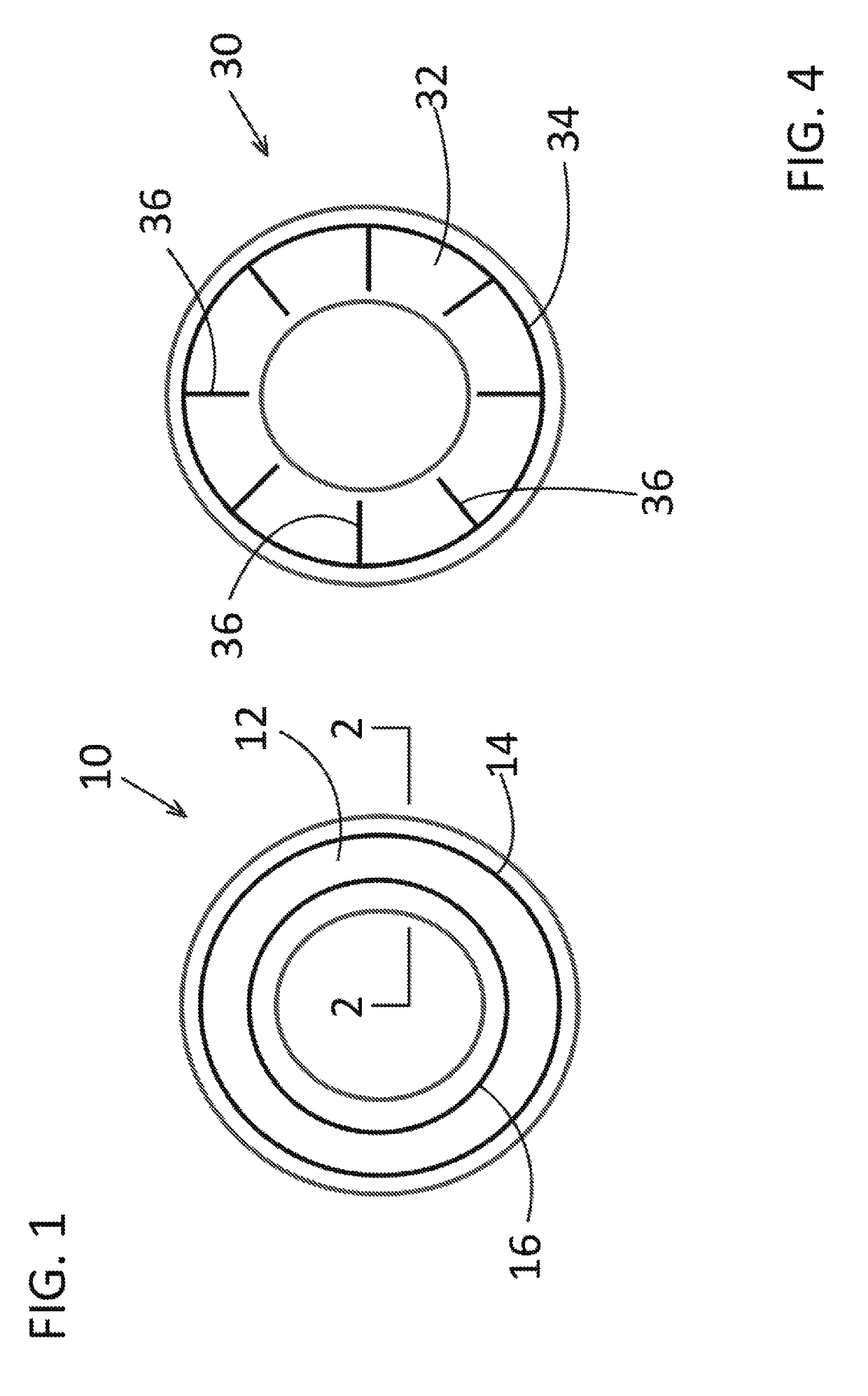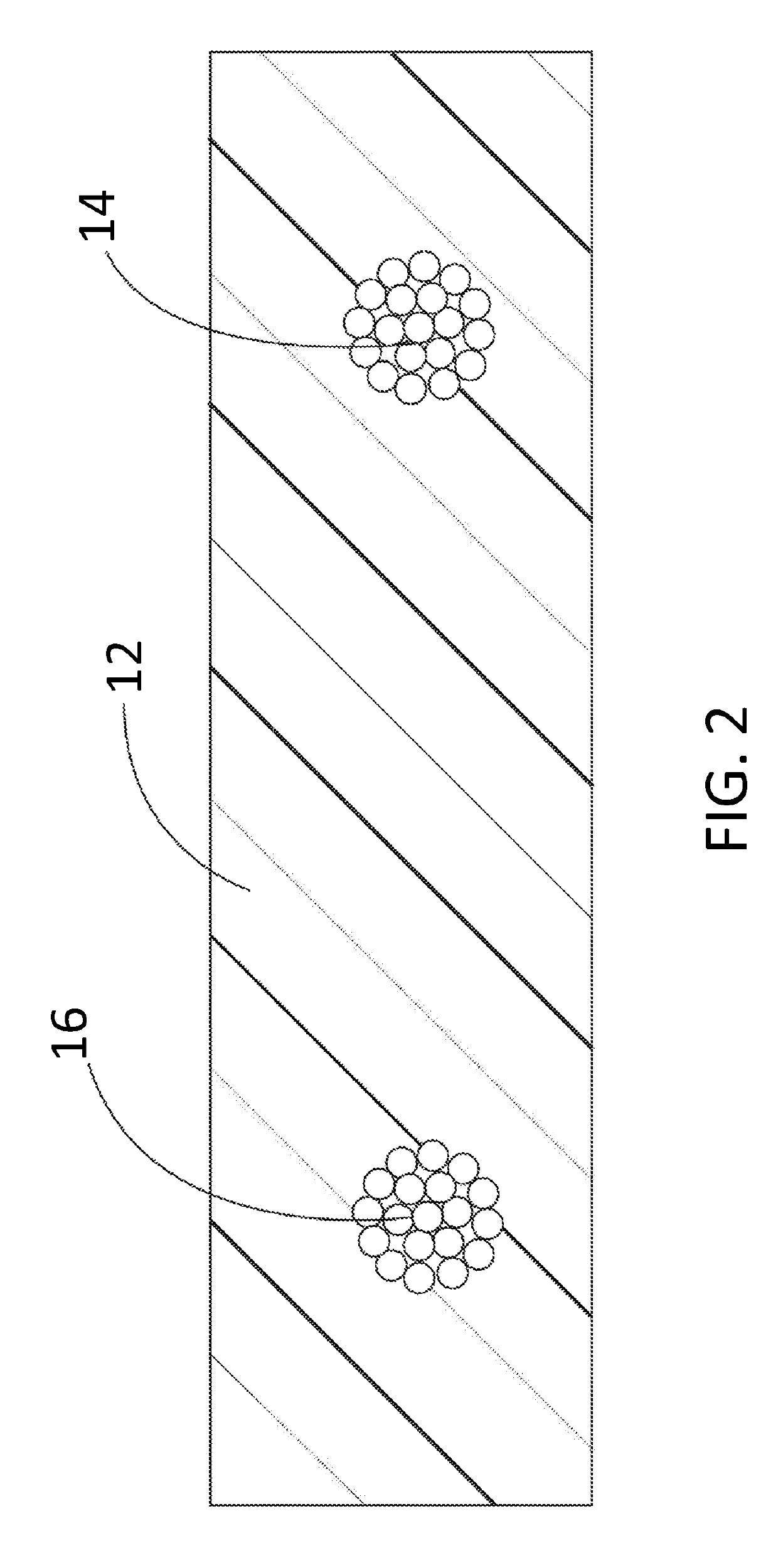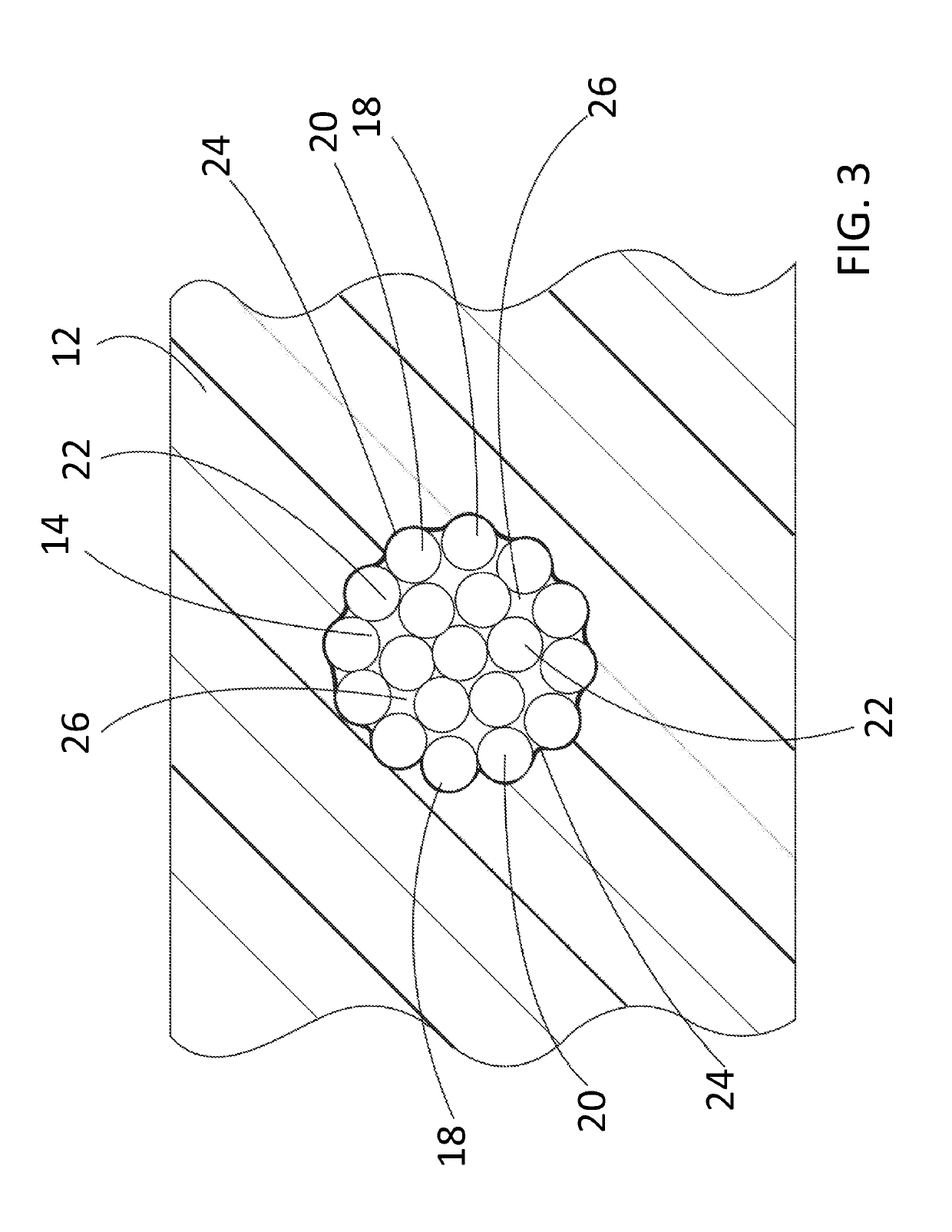Composite materials having embedded metal ropes for increased damping capacity and methods of manufacturing same
a technology of composite materials and metal ropes, which is applied in the field of composite materials having embedded metal ropes for increasing damping capacity and manufacturing same, can solve the problems of macroscopic scale failure, failure of net sections of parts, and failure of composite materials on both microscopic or macroscopic scales, so as to increase the damping capacity of components formed, increase the strength of individual wires, and increase the effect of friction damping
- Summary
- Abstract
- Description
- Claims
- Application Information
AI Technical Summary
Benefits of technology
Problems solved by technology
Method used
Image
Examples
Embodiment Construction
[0025]In the following figures, the same reference numerals will be used to refer to the same components. In the following description, various operating parameters and components are described for different constructed embodiments. These specific parameters and components are included as examples and are not meant to be limiting.
[0026]The accompanying figures and the associated description illustrate the construction and use of vibration-damping ropes in composite material according to the disclosed inventive concept. Particularly, FIGS. 1 through 6 illustrate the rope embedded in several individual components for use in multiple applications. FIGS. 7 through 9 illustrate the rope embedded in a beam shown in multiple applications. It is to be understood that the illustrated configurations are suggestive only and are not intended as being limiting as other configurations may be adapted for use with the rope embedded in a composite material without deviating from either the spirit or...
PUM
| Property | Measurement | Unit |
|---|---|---|
| friction coefficient | aaaaa | aaaaa |
| tensile strength | aaaaa | aaaaa |
| damping capacity | aaaaa | aaaaa |
Abstract
Description
Claims
Application Information
 Login to View More
Login to View More - R&D
- Intellectual Property
- Life Sciences
- Materials
- Tech Scout
- Unparalleled Data Quality
- Higher Quality Content
- 60% Fewer Hallucinations
Browse by: Latest US Patents, China's latest patents, Technical Efficacy Thesaurus, Application Domain, Technology Topic, Popular Technical Reports.
© 2025 PatSnap. All rights reserved.Legal|Privacy policy|Modern Slavery Act Transparency Statement|Sitemap|About US| Contact US: help@patsnap.com



